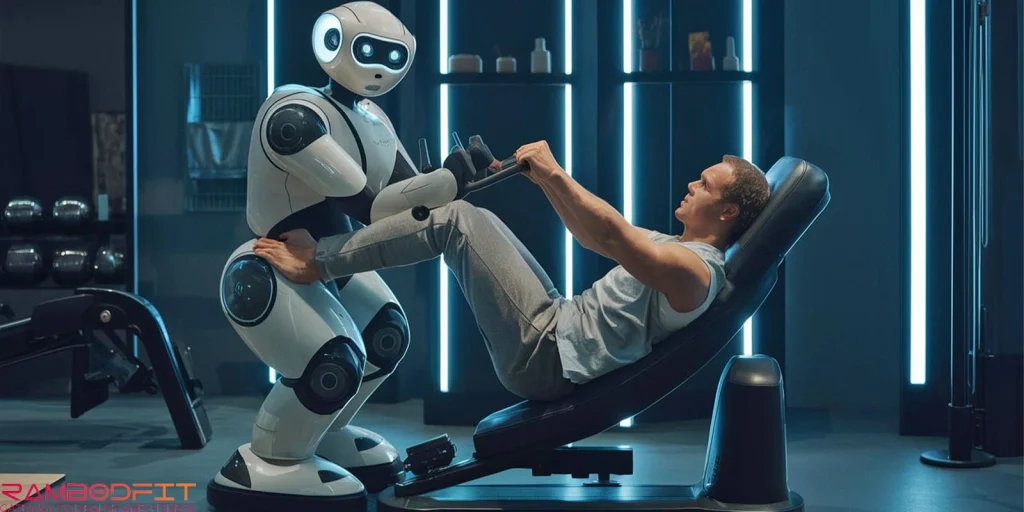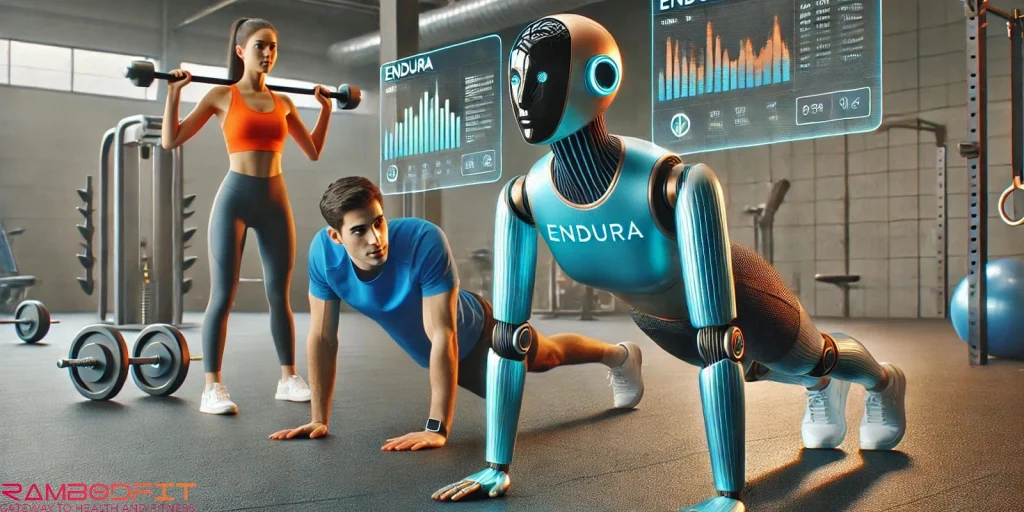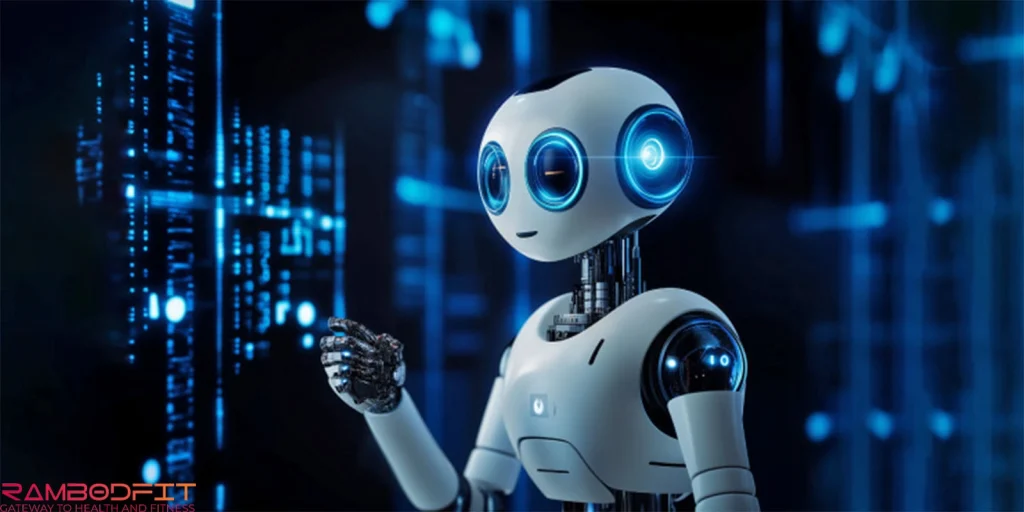


Alright, picture this: it’s 2024, and AI’s basically crashed the party everywhere you look. Your phone won’t shut up, your car’s out there driving itself, and—because why not—it’s even snuck into your gym routine through every AI and workout program flooding the internet. Wild, right?
I still remember the first time I fired up ChatGPT and typed out, “Hey, can you hook me up with a 12-week hypertrophy plan?” Boom. In, like, two seconds flat, I’ve got this shiny, color-coded spreadsheet from an AI and workout program, all split up, rest days, rep ranges, the whole nine yards. Looked way fancier than my usual Frankenstein routine, cobbled together from random YouTube bros.
But here’s where the wheels came off. Two weeks in, I’m bored out of my mind, my shoulder’s screaming, and my lifts are stuck in neutral. No tweaks, no advice, nothing. Just a cold, generic list from an AI and workout program that didn’t even ask how I was feeling that day. That’s when it hit me: AI’s cool and all, but it’s no replacement for a coach who actually gives a damn about your rotator cuff.
And, honestly, it’s not just me. Tons of folks are out here asking ChatGPT, Gemini, Claude—“What’s the best workout for me?” Like, as if an algorithm’s gonna notice your left knee’s acting up or your recovery’s shot. AI and workout program suggestions can be helpful, sure, but if you follow everything it spits out without thinking, you’re risking plateaus—or worse, injuries.
This isn’t just some “back in my day” rant, either. The research backs it up. So, here’s what we’re gonna do: I’m breaking down five big reasons you shouldn’t just hand over your muscle-building dreams to an AI and workout program. We’re talking cold, hard science, plus some real gym-floor wisdom. Rambodfit’s got a lot to say about this, so stick around.
Table of Contents

Back in 2024, some gutsy researchers decided to throw AI into the gym—figuratively, not literally, though that’d be hilarious—and see if these bots could whip up a 12-week muscle-building plan. The goal was to test how effective an AI and workout program could be when it came to designing routines that actually work. The results? Bit of a mixed bag, honestly.
So, here’s the lowdown: If you’re just starting out and have never touched a dumbbell in your life, AI’s got your back. An AI and workout program in this phase was safe, pretty well-organized, and gave newbies a nice starting point. Not rocket science, but it worked.
But—and it’s a big but—once you move past that rookie stage, things get messy. The AI and workout program setups just couldn’t keep up. No real progression, no tweaks for your own weak spots, and they totally ignored the cool, up-to-date muscle-building tricks people use nowadays. It’s like AI got you through the tutorial, then left you hanging right when stuff got interesting.
Basically, if you’re in that honeymoon phase (first few months of lifting), AI’s fine. But after that, unless your AI and workout program is backed by some serious coaching intel or adaptive feedback, you’re on your own, kid.
Why Exercise Choice Matters
Look, if you still think building muscle is just endless bench presses and squats, you’re basically living in 2010. The game’s changed—like, big time. These days, you’ve got coaches swearing by stuff like lengthened partials (yeah, that “hurts so good” stretch at the bottom—apparently that’s where the magic happens). And guess what? The smarter AI and workout program setups are starting to catch on, too, factoring in this kind of next-level training science.
People are obsessed with cable exercises now, too, because apparently, barbells can’t hit every muscle fiber in your body, who knew? And don’t even get me started on machines—suddenly they’re not just for old dudes with bad knees, but legit ways to push your muscles without wrecking your joints. If your AI and workout program doesn’t have at least a sprinkle of this new-school wizardry, especially if you’re more than a newbie, you’re honestly just leaving gains on the table.
AI’s Blind Spot
Let’s be real—most AIs are working with dusty, ancient exercise libraries. I’ve played around with this myself. One time, I asked ChatGPT for an advanced upper chest routine, and what did its AI and workout program spit out? The classics: incline barbell press, incline dumbbell press, push-ups. Yeah, okay, those work. But where’s the good stuff? No low-to-high cable presses, no reverse-grip incline dumbbells—nothing you’d see from coaches who actually know their stuff in 2024. It’s like asking for a craft cocktail and getting handed a warm beer.
Personal Example: My Plateau
Dude, I swear, I was wasting my life grinding through those basic AI and workout program chest workouts—totally spinning my wheels. Zero gains. Nada. It wasn’t until I started getting weird with it, like actually cranking out presses when my pecs felt like they were about to snap, or hopping on one of those bougie converging chest machines, that things finally started happening.
No shot some soulless AI and workout program could’ve dialed that in for me. Sometimes you need a crusty old coach who’s seen every gym fail in the book, or hell, just your own dumb trial and error.
AI’s Typical Advice
Almost every AI program I’ve seen prescribes strict rest intervals—60 seconds here, 90 seconds there—as if they’re gospel.
The Modern Science
You know what’s wild? People still act like there’s this magic number for rest breaks at the gym, like if you don’t follow some sacred timer, your muscles will just pack up and leave. Truth is, if you wanna get bigger or stronger, chilling out for a couple minutes—honestly, sometimes even three—between sets lets you push more weight and knock out extra reps. That’s just science, bro, and any legit AI and workout program should be flexible enough to account for that kind of individual recovery need.
But then you’ve got these AI workout apps and cookie-cutter routines trying to shove everyone into the same tight little rest window. Like, come on, we’re not robots. An effective AI and workout program should feel more like a choose-your-own-adventure than a rigid template. Just pay attention to what your body’s saying. Rest until you’re ready to crush your next set, not when some app dings at you like Pavlov’s dog. Timers are cool and all, but they shouldn’t run your whole workout.
How This Affected Me
Man, AI’s whole “short rest” spiel totally wrecked me. My later sets turned into sad little noodle lifts—I just couldn’t move the weight. Once I stopped obsessing over a timer and actually let myself breathe (like, 2–3 minutes for heavy stuff, maybe a minute for curls or whatever), the gains finally showed up. My numbers shot up, and honestly, so did my biceps
Reason 3: AI Fails at Personalization
Cookie-Cutter Programs
AI’s great for throwing out general advice, but, man, it totally misses the little stuff that actually matters. Like, does it know your right knee sounds like microwave popcorn thanks to that high school soccer injury? Nope. Or that you’re basically a zombie some days because night shifts wreck your sleep? Not a clue.
Even the most polished AI and workout program usually can’t catch those nuances. Heck, maybe you’ve got one arm that could bench-press a small car while the other’s just along for the ride. Point is—those details? They flip the whole training game.
Real-World Consequences
Man, I tried out this AI and workout program-generated leg day once—back squats, RDLs, lunges, the whole deal. Looked solid on paper, right? Yeah, except my lower back started screaming halfway through. The AI and workout program didn’t bother asking about my ancient back injury (thanks for nothing, robot overlord). Any halfway decent human coach would’ve said, “Uh, maybe let’s do hack squats or leg presses instead, genius.” But nope, I just ended up hobbling around like I’d fought a bear.
Why Personalization Matters More Over Time

The Muscle Damage Myth
You still see a ton of fitness apps and wannabe gurus out here acting like you gotta chase that “oh my god I can’t walk” soreness if you want to build muscle. The truth is, that’s kind of outdated. Real talk? What actually matters is how much tension you put on your muscles (think: heavy weights, slow negatives, that kind of thing) and just doing enough reps and sets—volume, basically.
Most AI and workout program setups tend to miss this nuance, focusing too much on gimmicks like chasing soreness. But soreness is overrated. It’s not some magic sign you’re growing.
Missing RIR and Failure Guidance
Honestly, if you’re not pushing close to failure—like, you’ve only got maybe one or two shaky reps left in the tank—you’re probably just spinning your wheels. Even the smartest AI and workout program often skips the fine print on this, leaving you with generic advice. It blows my mind how nobody ever talks about RIR (reps in reserve), like it’s some top-secret code.
Instead, you get these super generic tips from AI and workout programs: “Oh, just lift until you feel challenged.” Cool, but what does that even mean? That’s about as helpful as a screen door on a submarine. Give me something concrete, not this wishy-washy nonsense from any AI and workout program.
Why This Matters in Practice
Man, when I first started messing around with AI and workout programs for my training, I was basically half-assing it without even knowing. I’d finish a set and still have, like, four or five reps chilling in the tank, thinking I was killing it. Turns out, nope. Only after a real coach (you know, an actual human with eyes and sarcasm) showed me how to judge RIR did I start seeing legit gains. Honestly, no AI and workout program ever clued me in on that. It just can’t teach you how to actually feel when you’ve hit your limit.
Adaptation Requires Observation
Building muscle? It’s a wild ride, honestly. Some days you’re a beast, other days you’re just dragging your sorry self through the motions—depends if you slept like a rock or tossed all night, what garbage (or goodness) you ate, how much your boss yelled at you, all that jazz. A legit coach? They’re basically your gym whisperer.
Stuff like:
• “Whoa, elbows out to Jupiter—bring ’em in, dude.”
• “You look cooked. Let’s dial it back today.”
• “That row? Looks like you’re starting a lawnmower. Smooth it out, slow on the way down.”
Most AI and workout program setups? Nah. They can’t eyeball your form, spot that dead-in-the-eyes fatigue, or hear your knees making that Rice Krispies sound. Not even close.
Why Feedback Is Everything
Look, training’s not just ticking boxes on some fancy AI and workout program—it’s about actually listening to your body. You ignore what it’s telling you? Well, good luck. Even the most brilliant AI and workout program falls flat if you’re not paying attention. AI can spit out all the routines and schedules it wants, but honestly, only you (or another human with a clue) can figure out what really works in the moment. Context is king, not code.
So… Should You Use AI At All?
Yeah, sure—just don’t be a robot about it. AI and workout program tech is a total game-changer if you’re new and have no clue where to start. Like, you want someone to hold your hand and tell you what the heck a “Romanian deadlift” even is? AI and workout program tools got your back, no judgment. They spit out workout plans, break down jargon, and even show you how not to snap your spine in half.
But if you’re actually trying to get swole or hit some real PRs? Don’t treat AI and workout program results like they’re some fitness oracle. Use them for ideas, sure, but double-check with real coaches, dig into legit research, and trust your own body. Honestly, if you’re not fact-checking that robot, you’re just asking to end up as a gym meme.
My Hybrid Approach (What Actually Worked)
Okay, here’s how it finally clicked for me:
• I let the bots do the heavy lifting with the big-picture crap, like figuring out how to split up my workouts or throwing random exercises my way through an AI and workout program.
• But when it came to, you know, the stuff that actually matters? That was all me. Pushing myself, keeping tabs on how many reps I had left in the tank, that sort of thing—stuff no AI and workout program can fully handle.
• Every week I’d mess with the plan, depending on whether my body felt like a champ or just wanted to nap forever, because a good AI and workout program leaves room for that kind of personal tweak.
Seriously, it’s the best setup: enough of a game plan so I don’t flake, but loose enough that I don’t lose my mind from boredom. AI and workout program tech is handy—sure, let it fetch the coffee—but, uh, I’m the one running the show.

Okay, here’s the thing—AI and workout program tech is cool and all, I’ll give it that. It basically hands out fitness advice like Halloween candy, and yeah, suddenly everyone’s got access to workout routines that used to be locked behind a paywall or some ripped guy’s YouTube channel.
But let’s be real for a sec: getting jacked isn’t just about sticking to some generic AI and workout program roadmap. Your body’s weird. My body’s weird. Everybody’s got their quirks, and that means you gotta tweak things, listen to what your muscles are screaming, and switch it up when stuff stops working. AI and workout program tools? Not so hot at that. Once you’re past the “newbie gains” stage, you kinda need more than just a chatbot’s pep talk.
So sure, mess around with AI and workout program tech. Let it spit out routines, spark ideas, get you moving. But don’t just turn your brain off and follow it blindly, ya know? Pay attention, question everything, and if you’re stuck, maybe hit up a real human who’s been in the trenches. Your gains will thank you later.
Reference and Further Studies
Nope, not even close. Sure, AI and workout program tools spit out generic workout plans and can kinda teach you the basics, but let’s be real—it’s not catching your wobbly squat or cheering you on when you wanna quit. Injury tweaks? Emotional support? That extra push when you feel like garbage? Yeah, that’s human territory.
Pretty much, yeah. Most AI and workout program apps err on the side of caution, so you’ll get light weights and dead-simple moves. But don’t just trust the robot—double-check your form (YouTube is free, y’all, or grab a real coach once in a while). Nothing like building bad habits right outta the gate.
Give the AI and workout program all the dirt—your equipment, injury history, what you actually wanna achieve, the whole nine yards. Then, treat its plan like a rough draft. Track your progress, mess with your rest times, and swap out any move that feels sketchy. The more you steer the ship, the better the ride gets.